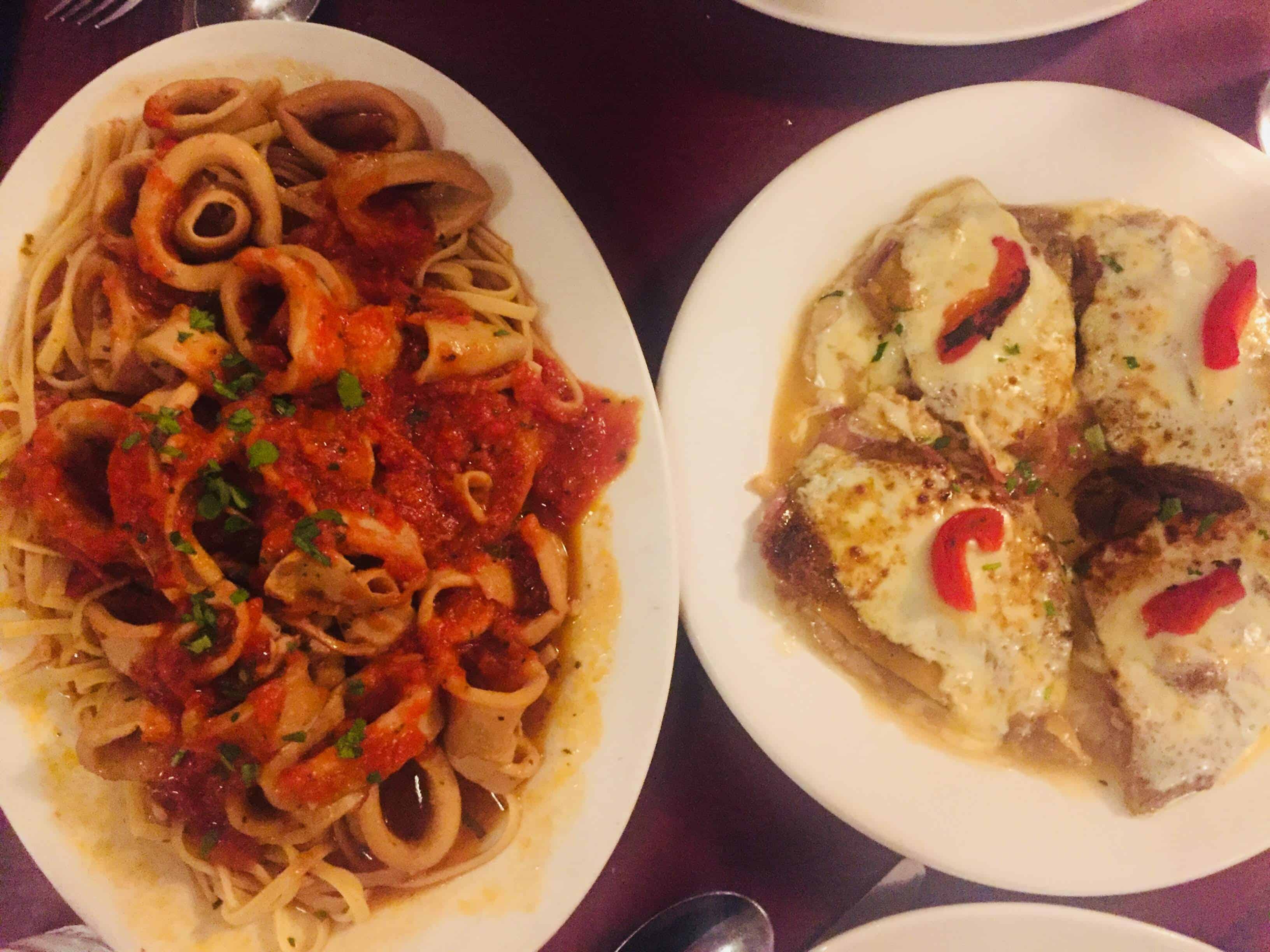The Bronx’s Little Italy is – as the name suggests – not huge. From the intersection of East 187th Street and Arthur Avenue that marks the center of the neighborhood, its commercial district extends another two blocks south before bottoming out at St Barnabas Hospital. But those two blocks on Arthur Avenue contain everything you’d imagine a Little Italy should have: mozzarella emporiums, meat markets with sausages hanging like stalactites from the ceiling (and flayed whole calves in the display case), an old man hand-rolling cigars, and a number of legendary Italian-American eateries that predate the first Olive Garden by a few decades.
It’s an old-fashioned neighborhood – most of the shops close early, six pm at the latest – but, 15 minutes’ walk from the nearest subway station, the area is fairly bustling with locals, Fordham students, and occasional tourists. To outsiders, it’s familiar from A Bronx Tale, but it hasn’t let its fame get to its head.
Dominick’s is a neighborhood standby, serving Italian-American dinner staples with nonchalant grace and charm to old-timers, couples, celebrities, and Yankees fans at communal tables from Wednesday through Monday. It provides huge portions of pasta alongside dishes like chicken marsala, stuffed peppers, tripe, and branzino. The waiters all have an air of having more or less grown up inside the establishment.
The menu is long, but until relatively recently, it didn’t exist anywhere except in the servers’ heads. Traditionally, customer asked what was good to eat, and the waiter apparently rattled off some suggestions from which the former chose. At the end of the night, instead of writing up a bill, the server simply told the customer the total, and he paid in cash.
This is all still true, except that a single printed menu now hangs at the back of the dining room – presumably a concession to tourists whom the all-verbal scheme freaked out. But it’s too small to read from a distance, and if you’re not a regular who already knows his order, it’s not totally clear whether you’re supposed to get up from your table to examine it or rely on your waiter. It’s a little confusing, but based on my own limited observation, conversation remains the preferred method for most diners.
For whatever haphazardness this system may imply, Dominick’s obviously possesses an unflappable underlying professionalism to which its excellent food attests. My companion and I shared the baked clams (12 for $19), the linguine with calamari ($22, with big bands of squid piled high), and the veal sorrentino ($22). I didn’t know what “veal sorrentino” was when I ordered it, but here it came in four tasty mounds of pounded meat, tender eggplant, and mozzarella. We drank wine by the glass. (“Red or white?” the waiter asked – that was all he asked.)
Earlyish on a Friday night, we were probably the youngest diners in the restaurant and perhaps the only newcomers. Even so, Dominick’s had none of the embalmed quality of some dining “institutions” – it’s a lively and fun place, even for people like me, who don’t especially like Robert De Niro movies.









